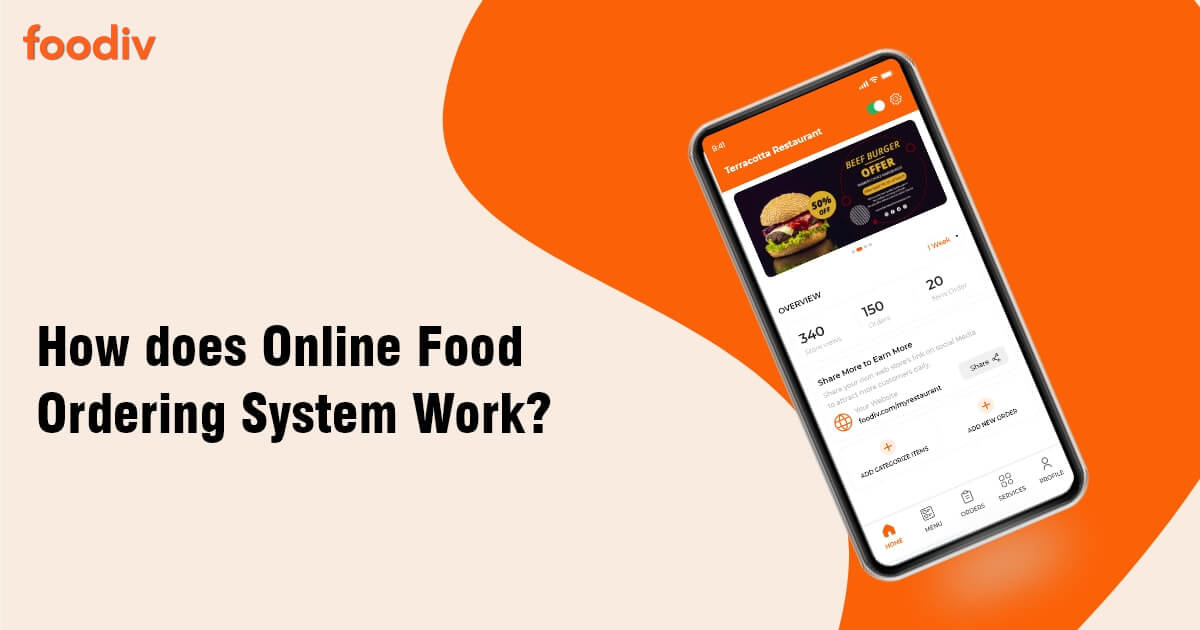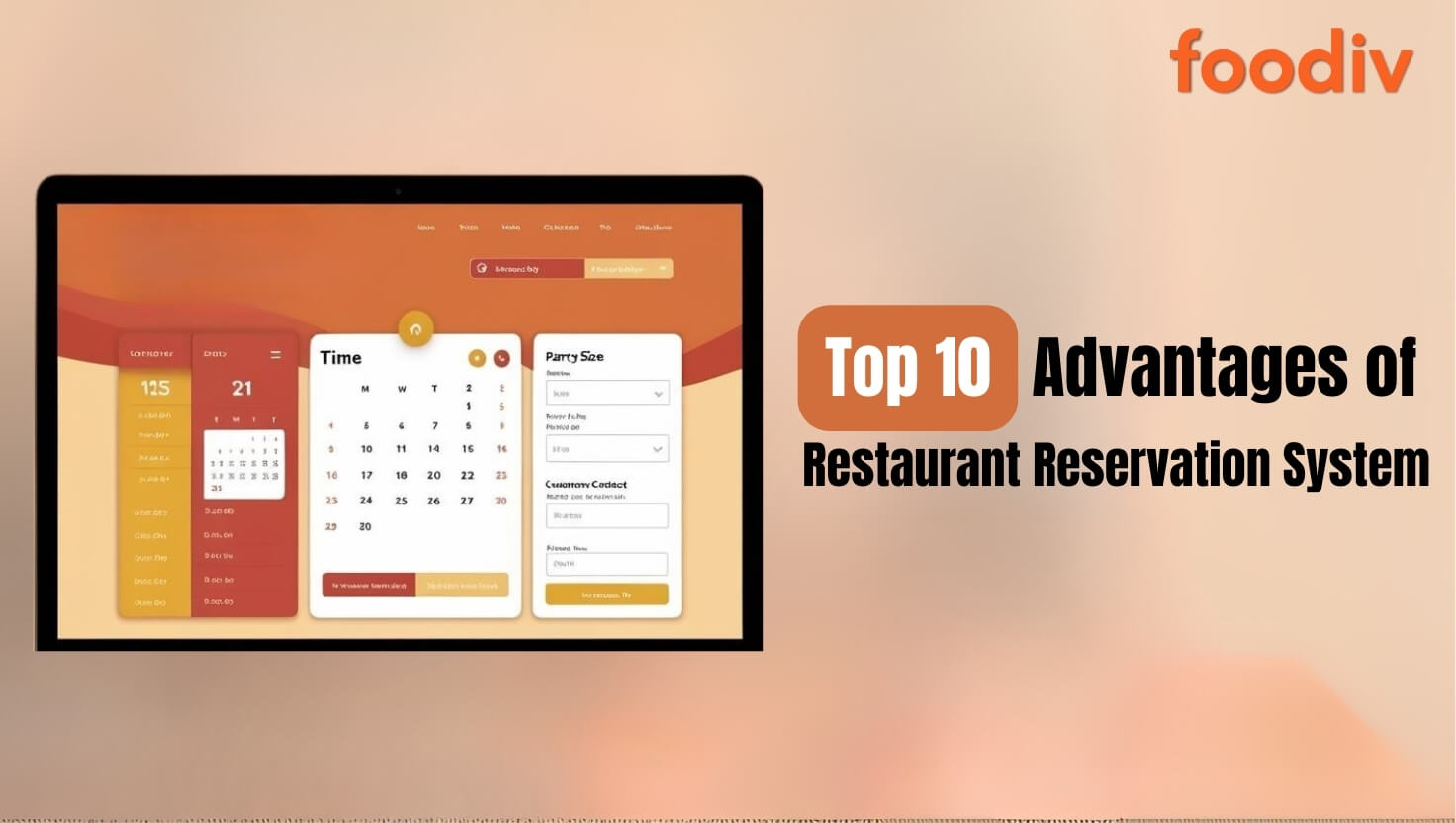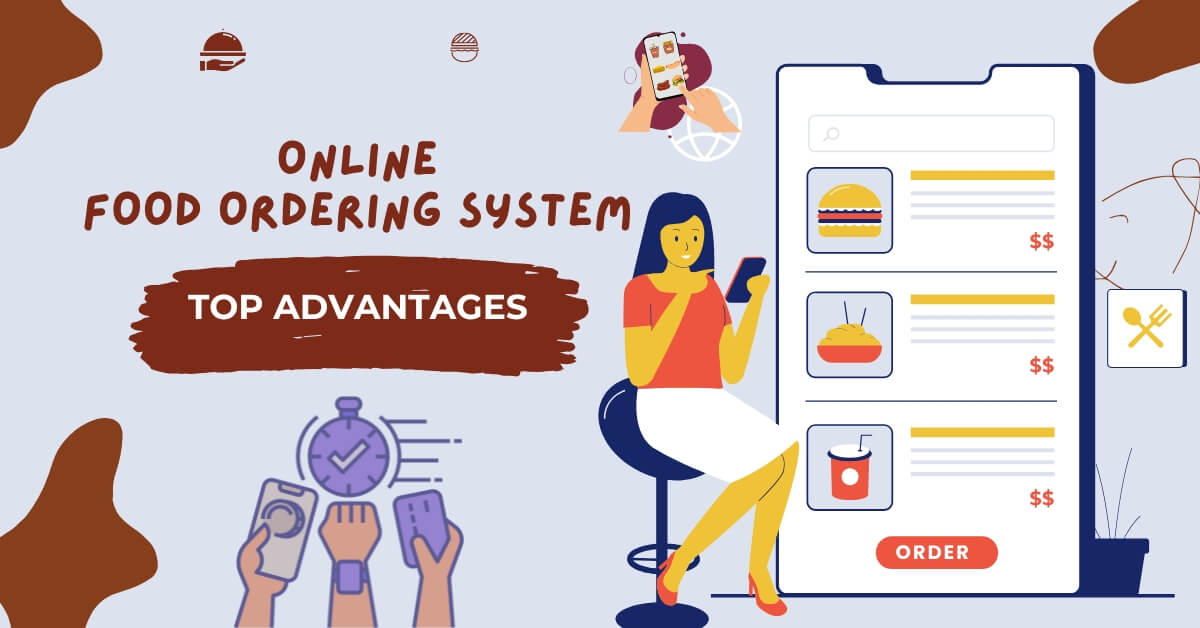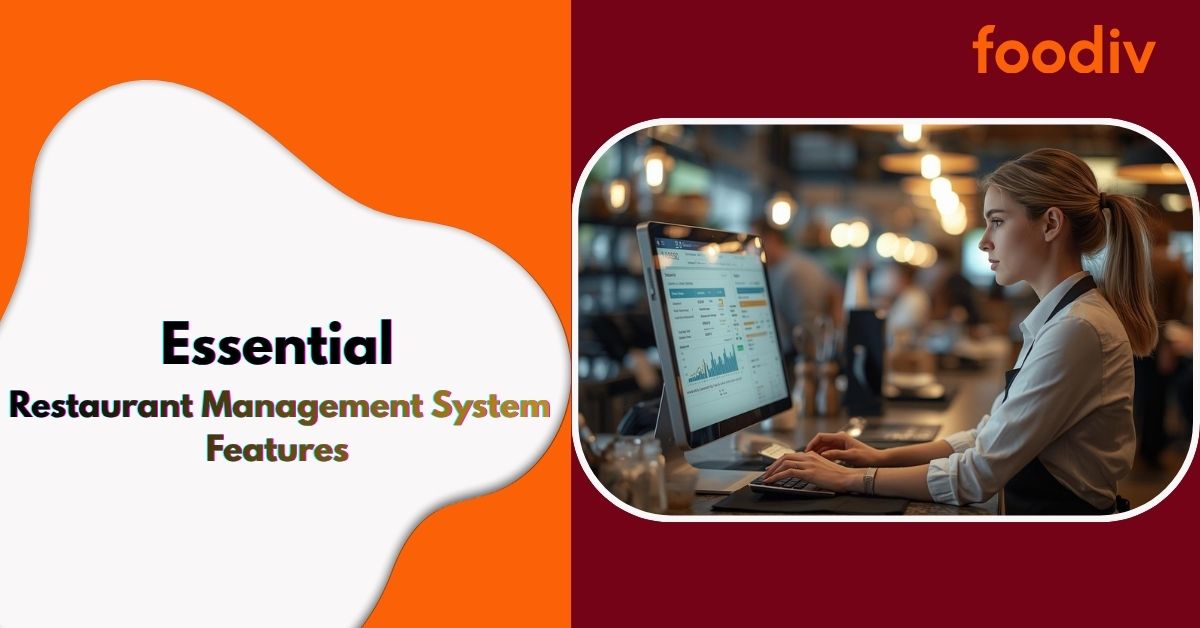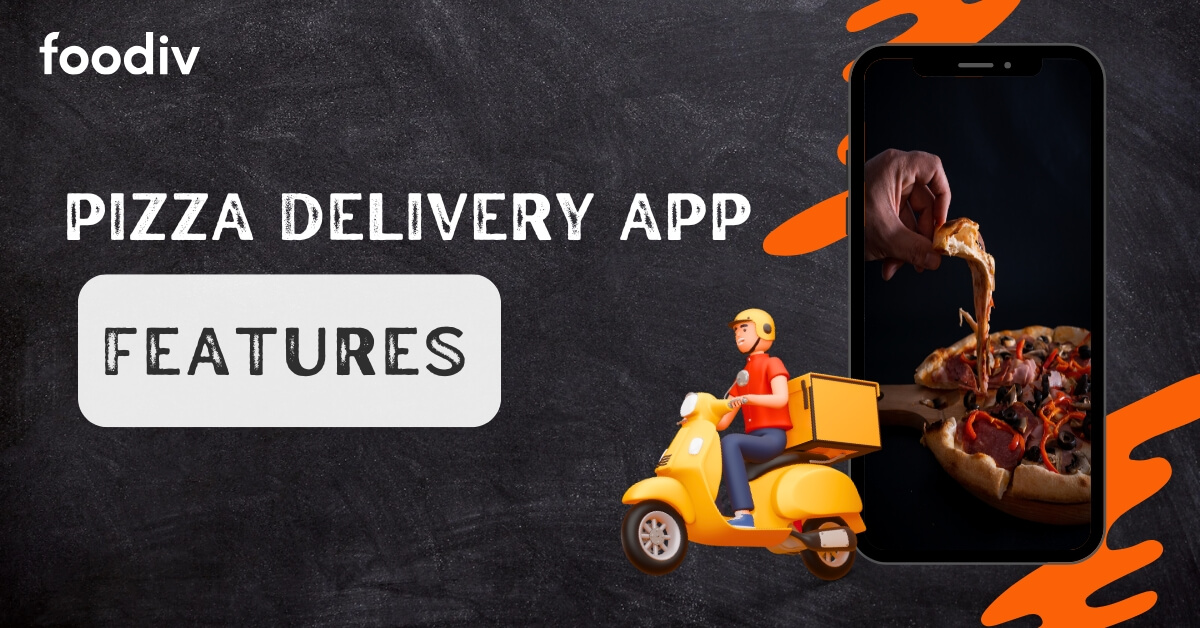
Quick Summary: Have you started a pizza restaurant? You might have associated with a third-party delivery partner or be exploring the potential of a personalized pizza delivery system. So, if you are exploring what features a pizza delivery app should have, this article brings you a list of top features based on the digital restaurant trends 2025.
Pizza remains a favorite choice among consumers, consistently ranking as one of the most ordered food items globally. The demand for convenient and efficient food delivery services continues to rise, driven by evolving consumer lifestyles and technological advancements.
A dedicated pizza delivery app serves as a vital tool for restaurants aiming to meet customer expectations and streamline operations. Such an application facilitates order management, enhances service accuracy, and fosters strong customer relationships through consistent and reliable service.
Recent industry reports highlight significant growth in both the pizza and online food delivery markets. According to research, the global pizza market is projected to grow by USD 1.91 trillion by 2029, reflecting a compound annual growth rate (CAGR) of 7.88%. Concurrently, the global online food delivery services market is expected to reach USD 498.80 billion in 2025, with a projected CAGR of 9.0% from 2025 to 2030.
These trends underscore the importance for pizza businesses to adopt robust delivery applications that cater to modern consumer demands. This guide outlines the essential features that a pizza delivery app should encompass to enhance performance, increase customer satisfaction, and support sustainable business growth.
The pizza business and pizzeria is the most exciting business in 2025. You can make the most out of this business, provided that you have followed the industry’s ethics. Leveraging pizza delivery application for restaurants and pizzerias is as crucial as establishing a pizza business itself. Besides, it is also important to understand if the commission-free pizza ordering software has all the features you need to run your modern pizza restaurant.
This article is all about the significant features must have in pizza ordering system must have, let’s explore one by one.
Top Features to Have in a Pizza Delivery App
Pizza delivery services continue to grow as customers seek fast and convenient ordering experiences. Restaurants that invest in high-performing applications are better equipped to meet these expectations. Choosing the right features of a pizza delivery app helps improve customer satisfaction, order accuracy, and overall efficiency.
These top features in a pizza delivery system are designed to support restaurants in managing both the front and back ends of their business. From customer interaction to kitchen coordination, each feature plays an essential role in delivering quality service at every step.
Here are the most important pizza delivery app features that help businesses improve service speed, enhance customer experience, and support long-term growth.
Real-Time Order Tracking
Customers prefer knowing where their pizza is once the order is placed. Real-time order tracking helps provide this visibility. It shows live updates during each stage, including confirmation, preparation, and delivery. This is one of the most requested features of pizza delivery apps because it builds confidence in the service.
Restaurants benefit by receiving fewer calls and messages asking for updates. The app handles these communications automatically, which helps the team focus on completing orders faster. This pizza delivery app feature also reduces delivery errors by keeping both the restaurant and the customer informed throughout the process.
How Real-Time Tracking Works
Real-time tracking systems use order status updates from the kitchen and location data from the delivery partner. After an order is placed, the app displays each stage as it happens. The customer sees updates like “Order Confirmed,” “Preparing,” and “Out for Delivery,” followed by an estimated arrival time based on GPS.
For example, a user orders a pizza for dinner. While waiting, they can check the app and see that the order is being baked. A few minutes later, the app notifies them that the delivery is on the way, including the driver’s location and expected arrival time. This creates a smoother and more predictable customer experience.
Real-time tracking supports transparency and reliability, both of which are key to building trust with customers. This Pizza delivery app feature remains essential for any food delivery app for pizza shops aiming to stay competitive in the market.
Seamless Online Ordering Experience
One of the most essential pizza delivery system features is a smooth and easy ordering process. When customers open the app, they expect to find what they need quickly and place an order without delays. A simple and clear interface allows them to select menu items, customize their pizza, and complete payment with minimal effort.
A well-structured app reduces the time it takes to place an order. Menus should be searchable and organized by type, such as vegetarian, non-vegetarian, and combo meals. Filters for size, crust type, and ingredients help users find what they want faster. A smooth checkout flow ensures that customers do not abandon their cart due to confusion or frustration.
For example, a returning customer wants to reorder their previous meal. With saved preferences and a repeat order feature, they can complete the process in just a few taps. This level of convenience improves the overall user experience and increases repeat purchases.
Pizza restaurants that focus on online ordering system efficiency will find it easier to attract and retain customers, especially during peak times.
Inventory and Kitchen Management
A delivery app should not only serve customers but also support restaurant operations. Inventory management is one of the most important features of a pizza delivery app for ensuring that the right ingredients are available at the right time.
When a customer places an order, the app should check for ingredient availability. If an item is out of stock, the app can automatically remove it from the menu or notify the user. This helps manage expectations and avoids the need for follow-up calls. Real-time syncing between the ordering system, inventory list, and kitchen status helps reduce errors and delays.
In practice, when a restaurant runs low on a topping like mushrooms or cheese, the app updates the menu and removes the option until stock is refilled. This allows the kitchen to work smoothly without receiving orders it cannot complete.
By integrating kitchen management with the ordering platform, pizza businesses can reduce waste, manage prep times more efficiently, and serve more orders without confusion.
Menu Customization Options
Pizza is one of the most customizable food items, and a strong delivery app must reflect that. Menu customization is one of the top features in a pizza delivery app because it allows users to create a pizza that matches their exact preferences.
Customers often want to choose from different crusts, sauces, cheeses, and toppings. The app should provide clear options for each choice and allow users to select or remove ingredients with ease. It is helpful to group options in a logical order and guide the user through the customization process step by step.
For example, a customer may prefer a thin-crust, half-and-half pizza with extra cheese on one side and no onions on the other. The app should allow these adjustments without requiring the user to leave the order page or reselect items. A visual interface or preview image can make the process easier to understand.
Custom pizza ordering also improves customer satisfaction. When people can build their ideal pizza with just a few clicks, they are more likely to return. This pizza delivery app feature supports both user convenience and operational accuracy.
Multiple Payment Methods
A flexible and secure payment system is a core part of any pizza ordering app. Customers expect to choose from a range of payment options that are familiar and easy to use. A limited selection can result in abandoned orders, while a smooth payment experience helps increase completed checkouts.
The app should support cards, wallets, UPI, and cash-on-delivery. It is important to offer options that are popular in the region the restaurant serves. Payment gateways must work quickly and handle large volumes during peak ordering times.
In addition to variety, the app should also provide secure processing. Features like card tokenization, encrypted transactions, and verification steps help protect user data. Allowing customers to save their payment details for future orders adds convenience for repeat users.
For example, a customer may order a pizza using a digital wallet during lunch and prefer to use a credit card for a family dinner later in the evening. The app should make switching between methods fast and easy.
Providing multiple payment options builds trust and gives customers the freedom to choose how they want to pay. This improves conversion rates and supports repeat business.
Delivery and Takeaway Scheduling
Customers value control over when and how they receive their orders. A pizza delivery app should offer the ability to schedule deliveries and takeaways based on the customer’s preferred time. This pizza delivery system feature improves flexibility and helps restaurants manage order volume during busy periods.
Customers may want their food delivered during a specific lunch break or schedule a takeaway for the end of a work shift. By allowing users to set a future time slot, the app creates a more reliable and satisfying experience. The option to plan ahead also encourages more advance orders, which supports smoother kitchen operations.
For instance, a user planning a weekend gathering can place an order in the morning and choose delivery at a specific time in the evening. The restaurant receives this order early, which helps with preparation and delivery route planning.
Offering delivery and takeaway scheduling improves efficiency for both customers and staff. It reduces peak-time stress, ensures better order accuracy, and supports higher customer satisfaction.
Loyalty and Referral Features
Building loyalty is essential for long-term success. A strong pizza delivery app includes features that reward repeat customers and encourage them to invite others to use the app. Loyalty and referral programs help increase order frequency and expand the customer base through word-of-mouth.
A loyalty system can track points or rewards based on the value of past orders. Once customers reach certain levels, they can redeem points for discounts, free items, or exclusive offers. This creates a reason to return and encourages higher spending.
Referral features let users share the app with friends and receive benefits when their referrals place an order. This is a low-cost and high-impact marketing method for restaurants.
For example, a customer who orders every weekend could earn points for each purchase. After five orders, they might unlock a free side item or a discount on their next pizza. If they refer a friend, both users could receive a limited-time offer.
These pizza delivery application features increase engagement and make customers feel valued. They also support brand growth by turning satisfied customers into loyal advocates.
Real-Time Notifications
Clear communication during the ordering process improves customer confidence and keeps users engaged. A pizza delivery app should send real-time notifications to inform customers of every order status update. These notifications serve as a direct line between the restaurant and the customer.
Updates can include order confirmation, preparation status, dispatch time, and estimated delivery arrival. Timely alerts help manage customer expectations and reduce the need for follow-up calls or messages. Notifications also increase trust in the service, especially when orders are time-sensitive.
The app should support different channels such as push notifications, SMS, and email. Customers can choose their preferred method of receiving updates during the ordering process. Consistent communication builds reliability and encourages customers to reorder in the future.
For example, after placing an order, a customer receives a message that the pizza is being prepared. Later, another alert lets them know when the delivery partner has left the store. These updates keep the experience smooth and reduce uncertainty.
By offering real-time notifications, pizza restaurants can provide faster service, fewer delays, and a more responsive customer journey.
Review and Feedback System
Understanding customer feedback is important for continuous improvement. A pizza ordering app should include a clear system for collecting reviews after each order. Feedback helps identify what is working well and where adjustments may be needed.
After delivery, the app can prompt users to rate their experience and leave a comment. This allows restaurants to understand customer preferences, track service quality, and respond to any concerns. Gathering this information regularly leads to better service decisions.
In addition to public reviews, the app can include an option for private feedback. This allows customers to report issues directly to the management team, which helps resolve problems quickly and privately.
For example, a customer may be satisfied with the food but experienced a delay in delivery. They can leave a note in the private feedback section, which helps the team review the situation without affecting the public rating.
A strong feedback system supports customer satisfaction and encourages continuous improvement. When customers see that their opinions are valued, they are more likely to remain loyal to the brand.
Admin Dashboard and Analytics
Managing a pizza business requires access to reliable information. One of the most important pizza delivery app system is a clear and organized admin dashboard that provides real-time insights. This helps restaurant owners make informed decisions about sales, staffing, and customer preferences.
The dashboard should show data such as total orders, best-selling items, peak order times, and customer return rates. With this information, restaurants can improve operations and adjust their marketing efforts based on actual performance.
For example, a business may notice a rise in late-evening orders during weekends. With this insight, the restaurant can adjust delivery staff schedules or create evening-only deals to match demand.
Strong reporting tools are essential pizza delivery app features for growing businesses. They support cost control, customer satisfaction, and strategic planning.
Coupon and Promo Code System
Promotional offers help attract new customers and bring back existing ones. A flexible and easy-to-manage coupon system is among the most practical pizza delivery app features. It allows restaurants to run limited-time deals, first-order discounts, and seasonal promotions directly through the app.
The system should allow restaurants to set discount values, usage limits, and expiration dates. Customers can enter the promo code during checkout, and the app applies the discount instantly.
For instance, a restaurant might run a weekday lunch promotion where customers receive a discount on selected combos. This encourages orders during slower periods and helps maintain steady sales throughout the week.
Pizza delivery app features like a built-in promo engine allow businesses to respond to customer behavior in real time. When used strategically, promotions increase order frequency, improve app engagement, and strengthen customer loyalty.
In short, customer engagement and loyalty programs feature in a pizza delivery system:
- Offers rewards and incentives to customers (e.g., discounts, free menu items)
- Tracks customer spending patterns and preferences
- Improves customer retention and loyalty
- Differentiates the business from competitors
- Builds more substantial relationships with customers
- Enhances customer satisfaction and loyalty
Best Ways to Boost Your Online Pizza Ordering Business
Customer Profile and History
Personalization improves the ordering experience and increases repeat business. One of the most effective pizza delivery app features is a customer profile and order history section. This feature of pizza delivery app allows users to save preferences, view past orders, and reorder with ease.
When a customer logs into the app, they can access their favorite items, addresses, and previous transactions. This makes the ordering process faster and more convenient. Returning users can place a repeat order in just a few taps, which helps increase conversion rates and customer satisfaction.
For example, a regular customer may always order a medium vegetarian pizza with extra cheese. Instead of building the order each time, they can select it from their past orders and check out in seconds.
Pizza delivery app features that support customer profiles also help restaurants understand individual behavior. This can be used for targeted promotions or personalized recommendations, leading to a better customer experience and stronger brand connection.
Suggested Tip Percentages And Tip Pooling
Tip pooling is a feature that allows delivery drivers to share tips among themselves, helping to ensure that all drivers receive a fair and equitable distribution of tips.
- Helps customers easily provide gratuity to delivery drivers
- Provides suggested tip percentages (e.g., 15% or 20%)
- Allows drivers to share tips through a tip pooling
- Improves employee morale and satisfaction
- Streamlines transactions and reduces administrative burden
- Enhances delivery process and customer satisfaction
Order Cancellation and Edit Option
Flexibility is essential in food delivery. Customers sometimes need to make changes or cancel their orders shortly after placing them. Including a cancellation and edit option is one of the most user-friendly pizza delivery app features a restaurant can offer.
Allowing edits within a short time frame reduces frustration and shows that the business values customer needs. The app should let users cancel an order or adjust details like delivery instructions, toppings, or quantity before the kitchen begins preparation.
For instance, a customer may realize they forgot to remove an ingredient or need to switch the delivery address. If the app provides a quick way to make this change, it avoids the need for a call to customer support and prevents delays.
Pizza delivery app system like this improve convenience and reduce service complaints. By handling changes within the app, restaurants also maintain accurate records and keep their workflow efficient.
Multi-Outlet Support
For restaurant brands operating in more than one location, managing multiple branches within a single platform is essential. Multi-outlet support is one of the most advanced pizza delivery system features that helps scale operations without losing consistency in service.
This feature allows customers to see the menu, availability, and delivery timing based on their current location. It also helps restaurants assign orders to the nearest outlet, which improves delivery speed and accuracy.
A business operating in multiple cities can manage inventory, staff, and reports separately for each branch while using one dashboard. This keeps operations efficient and reduces confusion between locations.
For example, a user in one city may have different delivery hours and menu items than a user in another city. With multi-outlet support, the app automatically adjusts the experience for each location.
Pizza delivery app features like this support business growth, enhance user experience, and maintain brand consistency across different regions.
Language and Currency Support
Reaching a wider audience often requires adapting the app to different languages and currencies. Pizza delivery app features that include multilingual and multi-currency options create a more inclusive experience, especially in regions with diverse customer groups.
Customers are more comfortable when they can read the menu, follow instructions, and complete transactions in their preferred language. Showing prices in the local currency helps reduce confusion and improves trust during the checkout process.
For instance, a pizza business or Pizzeria operating in a multilingual city or across borders can allow users to select their language and currency from a simple settings menu. The app then displays content accordingly without affecting functionality.
Pizza delivery app features with language and currency support are important for building loyalty in new markets. They help Pizzerias connect with more customers and reduce the barriers that might otherwise prevent users from completing an order.
Mobile POS Handhelds
The handheld POS system is a boon in the pizza ordering system, as it comes with unique and handy features. For example, pizza ordering solutions come with POS-enabled features. It is also known as a mobile payment, a payment gateway that allows pizza restaurantsto access payments. Moreover, it comes with various additional features, such as consumers can tip, sign, request a receipt, and more.
Caller ID Integration
Caller ID integration in a pizza delivery system is a feature that allows businesses to automatically identify the caller’s phone number and retrieve information about the customer’s order history and preferences. This helps to streamline the ordering process and improve the customer experience. By automatically retrieving customer information, businesses can reduce the time required to take orders and minimize the risk of errors.
The caller ID integration feature can also deliver a personalized customer experience and build stronger customer relationships by remembering their order history and preferences. As a result, this feature can improve the accuracy and efficiency of the delivery process and enhance the overall customer experience.
Third-party delivery integrations
A pizza delivery system should have third-party delivery integrations to:
- Increase reach and attract new customers
- Streamline delivery process and increase efficiency
- Boost sales and revenue
- Reduce delivery costs
- Improve customer experience with fast, reliable delivery

But, if you are offering your own pizza delivery system,
Must Read : How to Start a Pizza Shop
Your Pizza Shop Deserves a Better Food Delivery App with the Best POS Technology
A well-structured pizza ordering system helps restaurants provide a faster and more reliable experience for their customers. It supports key areas such as order management, kitchen coordination, and delivery efficiency. The right pizza delivery app features enhance this system by making every step of the ordering journey simple, accurate, and customer-focused.
From real-time order tracking to loyalty programs and multi-outlet support, each feature works together to improve service quality and customer engagement. When restaurants choose a pizza ordering system that includes these essential pizza delivery app features, they gain a valuable tool for growth and performance.
Restaurants that aim to improve customer satisfaction, increase repeat orders, and expand their reach should focus on implementing a pizza ordering system that delivers results. With the right features in place, the Pizzeria business becomes more competitive, more efficient, and better prepared for long-term success.
Whether you are buying a SaaS based online pizza ordering system or getting a custom one built, the features guide given here is the basic features to consider when developing a food ordering application. Besides, if you want to understand more about pizza delivery systems, connect with us and we can help you make a better system for your pizza business. Book a free consultation.


